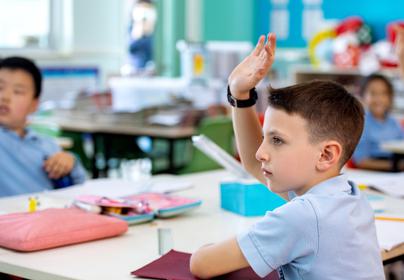This week in the EYFS, we have been celebrating the magic of nursery rhymes, a much-loved and powerful part of early childhood learning. Across all our EYFS classes, the children have been exploring traditional and modern rhymes through singing, storytelling, and creative activities. To mark the end of the week, each class chose a favourite nursery rhyme to learn and perform in front of the other children. It was a joy to see so much enthusiasm, confidence, and teamwork on display as the children proudly shared their songs and actions with their friends. The performances were a wonderful reminder of how music and rhyme can bring people together and create a strong sense of community and joy in learning.
Nursery rhymes are far more than just catchy tunes; they are an essential foundation for language and literacy development in the early years. Through rhyme, rhythm, and repetition, children begin to tune into the sounds and patterns of speech, which helps them develop phonological awareness, a key early skill that supports later reading and writing. When children chant and sing, they naturally practice listening carefully, recognising rhyming words, and developing an ear for the structure of language. This helps them begin to understand how words work, preparing them to break down sounds and build words as they move on to phonics and early reading.
In addition to their importance for early literacy, nursery rhymes are also a fantastic way to build vocabulary and comprehension. As children join in with familiar rhymes, they encounter new words and phrases in a fun and memorable context. Teachers often discuss the meanings of words or talk about the characters and settings in the rhymes to deepen understanding. For example, when singing “Jack and Jill,” children might talk about what it means to fetch a pail of water or why Jack broke his crown. These conversations help develop curiosity about language and foster early storytelling skills.
At school, we use nursery rhymes across the curriculum to make learning rich, engaging, and accessible for all children. In literacy sessions, they support early speech and listening skills; in maths, rhymes like “Five Little Ducks” or “Ten Green Bottles” make counting fun and interactive. In expressive arts, children enjoy creating props, painting characters, and acting out the stories from their favourite rhymes. Many rhymes also support physical development, as action songs such as “Incy Wincy Spider” or “Head, Shoulders, Knees and Toes” encourage coordination, rhythm, and movement.
Teachers weave nursery rhymes into daily routines, circle times, and play-based learning, ensuring that language learning happens in a natural and joyful way. Singing together helps children build confidence in their voices, strengthens memory, and fosters social bonds. Even the youngest children gain a sense of belonging as they join in with the familiar words and tunes that unite the whole class.






This week’s celebration has shown just how powerful nursery rhymes can be in supporting early education. The children’s excitement, laughter, and growing confidence have been a delight to witness.
Reception have had a wonderful week of nursery rhymes and storytelling. The children have enjoyed learning the rhyme “A Tisket, A Tasket” and have made beautiful green and yellow baskets to use during their performance in front of the EYFS. Alongside this, we have continued to enjoy the story Room on the Broom by Julia Donaldson. We have delved into the story by exploring the characters, setting, and events, and by discussing how the characters work together to solve the problem. The children have responded to this with great enthusiasm, using techniques from Talk for Writing to order the story on a story map. This supported their ability to retell the tale before creating their own imaginative versions. We have also been focusing on rhyming words this week, identifying and recognising rhymes in the stories we read. In maths, our focus has been on exploring patterns, using colours, shapes, and objects to create repeating sequences. The children have enjoyed spotting patterns in the environment and designing their own during creative play.
Nursery have had a magical week of learning. Last week’s spookiness spilled into this week’s activities, and it has been full of wonder and imagination. The children explored the enchanting world of magic by learning the nursery rhyme “When You Want to Make a Spell.” They had a wonderful time talking about potions and creating their own special spells, even making their very own magic wands and imagining all the amazing things they could do with them. Outdoors, our young learners took their magical play further by creating potions using natural materials such as leaves, sticks, and stones. During this activity, we introduced mathematical language related to capacity, encouraging the children to use words like full, empty, more, and less to describe their magical mixtures.
Pre-Nursery have had a fantastic week celebrating Nursery Rhyme Week with “Incy Wincy Spider.” The children have been learning all about apples and apple trees, linking their creative activities to both the rhyme and the autumn season. They made adorable handprint spiders to decorate the classroom and created 3D apple trees to take home. During our Friday celebration, the children proudly shared their rhyme and crafts with the rest of the EYFS. To finish off a wonderful week, the children made apple sauce together, an exciting sensory experience that everyone enjoyed at snack time. It was a week filled with autumn fun, creativity, and hands-on learning.




